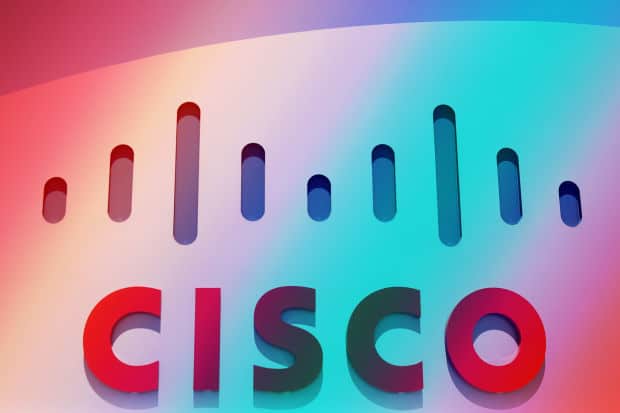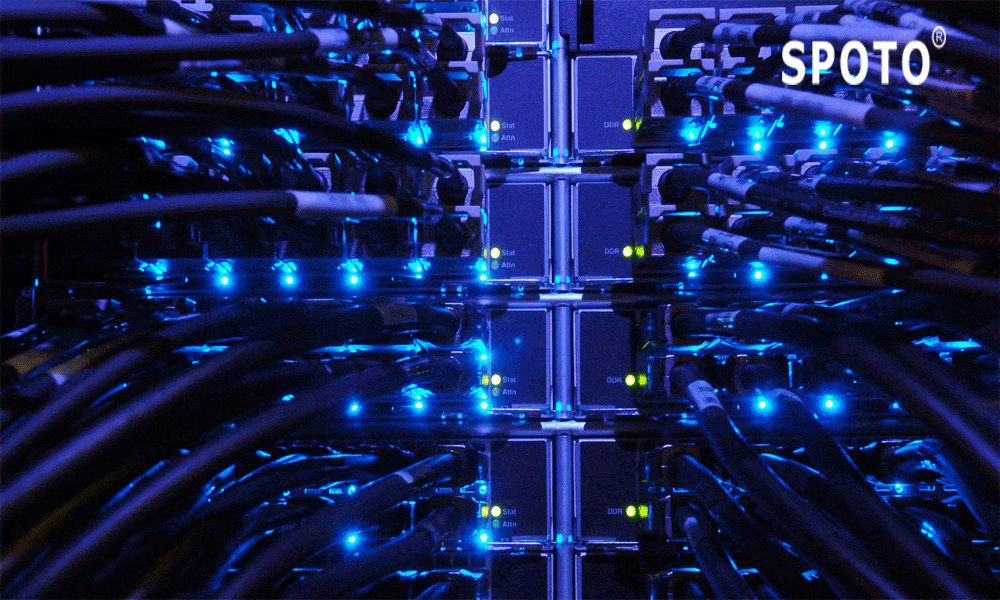-
- ccie security certification exam
- SPOTO Club
- 2024-01-17
The Cisco Certified Internetwork Expert Security (CCIE Security) program identifies the security experts who would be having the skills and knowledge to architect, implement, engineer, troubleshoot, as well as support the full suite of Cisco security technologies and solutions utilizing the latest industry best practices to secure environments and systems against modern security risks, vulnerabilities, threats, and requirements.
CCIE Security Lab Exam v5.0
The CCIE Security Version 5.0 exam would be unifying the written and lab exam topics documents into a particular curriculum, while explicitly it would be disclosed that which domains would be about which exam, and even the relative weight of each domain. Get more ccie security 5.0 click there.
The Cisco CCIE Security Written Exam (400-251) version 5.0 is considered to be a two-hour test having 90 to 110 questions that would be validating the professionals who would be having the expertise to design, describe, implement, operate, as well as troubleshoot complex security technologies and solutions. Candidates are required to understand the requirements of network security, how different components would be interoperating and translate it into the device configurations. The exam is considered to be the closed book and no outside reference materials would be allowed, while the commencement of exam.
Clearing the CCIE Security Lab exam would be an easy task. The candidates would require going through lots of studies. Thus it is recommended to have the help of a good and reliable study dump provider, like the SPOTO Club.
Passing Criteria
If the candidates wish to pass the lab exam, they are required to meet these two conditions:
The total addition of all modules should be equal to at least the minimum overall cut-score.
The addition for each module should be equal to at least the minimum cut score for the module.
Payment Terms
Candidates are required to make their request within 14 days following the exam date by utilizing the "Request for Reread" link present on the next to the lab record. A Reread would cost USD 1,000 and while a Review would cost USD 400. Payment is to be made online via credit card and the Reread or Review would be initiated as and when the payment is successful. You may not be able to cancel the appeal request once the process has been initiated. Refunds would be only given when results change from fail to pass.
All the candidates are required to wait 30 days between CCIE Security lab attempts. Note that the 30-day period would begin from the day after a failed lab exam.
Below mentioned are the policy related to the CCIE Security Lab Exam Attempts:
Candidates who fail any CCIE Security lab exam on the first attempt must wait for 30 calendar days before scheduling a second attempt at the same lab exam.
Candidates who have failed the second attempt at any CCIE Security lab exam must wait for 90 calendar days before scheduling any further attempts. The same waiting time would be applied to subsequent attempts until they reached fifth attempt.
Candidates who fail the fifth attempt at any CCIE Security lab exam must wait for 180 calendar days before scheduling any further attempts.
NOTE: There is no wait time between a passed qualification written the exam and the first lab or practical exam attempt. However, candidates must make an initial attempt at the CCIE Security lab exam within 18 months of passing the CCIE Security written exam.
These policy changes would be applied retroactively from the date of a candidate's first attempt at CCIE Security lab Exam.
Thus, if you wish to clear this exam in the first attempt, check out the prep courses, which are being offered at the SPOTO Club.
-
- ccie security certification exam
- SPOTO Club
- 2024-01-17
Here we would be discussing some of today's most widely used technologies that would be enabling the network administrators so as to ensure that sensitive data is secure from unauthorized sources. Standards like the IPSec (IP Security) as well as encryption standards are going to be covered, as are all the fundamental foundation topics you need to understand so as to master the topics which would be covered in the CCIE Security.
CCIE Security Protocols Include:
Remote Authentication Dial-In User Service (RADIUS)
Terminal Access Controller Access Control System Plus (TACACS Plus)
Advanced Encryption Standard (AES)
EAP, PEAP, TKIP, TLS
Data Encryption Standard (DES)
Triple DES (3DES)
IP Security (IPSec)
Internet Key Exchange (IKE)
Certificate Enrollment Protocol (CEP)
Point-to-Point Tunneling Protocol (PPTP)
Layer 2 Tunneling Protocol (L2TP)
We would be discussing some of the topics in here, but if you wish to gain all the information in detail, you should join the courses offered by the SPOTO.
Remote Authentication Dial-In User Service:
Remote Authentication Dial-In User Service or shortly known as RADIUS is a client/server-based system that would be securing a Cisco network against intruders. As implemented in IOS of Cisco, RADIUS sends authentication requests to a RADIUS server. RADIUS is the creation of Livingston Enterprises and is now defined as RFCs 2865/2866. A RADIUS server is considered as a device that has the RADIUS daemon or application installed. RADIUS must be used with AAA to enable the authorization, authentication, as well as accounting of remote users when utilizing the Cisco IOS routers.
Terminal Access Controller Access Control System Plus:
Cisco IOS is going to support three versions of TACACS, which are TACACS, Extended TACACS, and TACACS+. All three methods would be authenticating users and denying access to users who don’t have a valid username or password pairing. TACACS+ is Cisco proprietary, whereas RADIUS is considered as an open standard originally created by Livingston Enterprises.
Encryption Technology Overview
: When well-known Internet sites, like CNN, are exposed to security threats, the news reaches all parts of the globe. Ensuring that data crossing any IP network is considered secure as well as not vulnerable to threats is one of today's most challenging tasks in the IP storage arena so much that Cisco would be releasing an entirely new CCIE for the storage networking certification track.
Certificate Enrollment Protocol:
Certificate Enrollment Protocol or shortly known as CEP is a protocol jointly developed by Cisco and VeriSign, Inc. CEP is an early implementation of CRS (Certificate Request Syntax), a proposed standard to the IETF. CEP would be specifying about how a device communicates with the CA, how to retrieve the CA's public key, and about how to enroll a device with the CA. CEP would be utilizing PKCS (Public Key Cryptography Standards).
Extensible Authentication Protocol:
Extensible Authentication Protocol or shortly known as EAP would be enabling the dynamic selection of the authentication mechanism at authentication time which would be based on information transmitted in the Access-Request. PPP would be also supporting the EAP during the link establishment phase.
Virtual Private Dial-Up Networks (VPDN)
A Virtual Private Dial-Up Networks or shortly known as VPDN is considered as a network that would be extending remote access dialup clients to a private network. VPDN tunnels would be utilized either Layer 2 Tunnel Protocol (L2TP) or Layer 2 Forwarding (L2F). Cisco would be introducing L2F in RFC 2341. It would be also utilizing in order to forward PPP sessions for Multichassis Multilink PPP.
If you wish to have more information regarding the Security Protocols, you could have in through the preparation courses offered by the SPOTO.
-
- ccie security certification exam
- SPOTO Club
- 2024-01-16
Introduction
In today's interconnected global marketplace, effective communication and robust network security are paramount. The Telecommunications and Network Security domain is one of the ten domains of the Common Body of Knowledge (CBK) for the prestigious CISSP (Certified Information Systems Security Professional) Certification Exam. This domain encompasses network structures, transport formats, transmission methods, and security measures essential for maintaining the integrity, availability, authentication, and confidentiality of transmitted information across both public and private communication networks.
Key Areas of Knowledge
1. Establishing Secure Data Communications
Candidates must demonstrate a comprehensive understanding of secure data communications, including techniques for maintaining confidentiality, integrity, and availability of transmitted data.
2. Understanding Secure Network Architecture and Design
Mastering the OSI and TCP/IP models
IP networking fundamentals
3. Securing Network Components
End-point security
Filtering devices (e.g., firewalls, proxies)
Hardware components (e.g., modems, switches, routers)
Transmission media security
4. Establishing Secure Communication Channels
Multimedia collaboration (e.g., remote meeting technology, instant messaging)
Remote access security
Virtual Private Networks (VPNs)
Voice over IP (VoIP) security
5. Understanding Network Attacks
Candidates must develop a comprehensive understanding of various network attacks and their mitigation strategies.
Objectives and Expectations
According to the (ISC)² Candidate Information Bulletin, CISSP candidates are expected to demonstrate a deep understanding of communications and network security as it relates to:
Data communications in Local Area Networks (LANs) and Wide Area Networks (WANs)
Remote access security
Internet, intranet, and extranet configurations
Use of firewalls, network equipment, and protocols like TCP/IP
Virtual Private Networks (VPNs)
Techniques to prevent and detect network-based attacks
Maximize Your CISSP Preparation with SPOTO
Mastering the Telecommunications and Network Security domain is crucial for CISSP certification success. To facilitate your preparation, consider enrolling in SPOTO's comprehensive training courses. With expert instructors, interactive learning materials, and a structured curriculum, SPOTO equips you with the knowledge and skills necessary to confidently tackle this domain and excel in the CISSP exam.
Visit [SPOTO website link] today to explore their CISSP training offerings and take the first step towards becoming a globally recognized information security professional.
-
- ccie security certification exam
- SPOTO Club
- 2024-01-16
In the rapidly evolving landscape of cybersecurity, the Cisco Certified Internetwork Expert (CCIE) Security certification stands as a pinnacle of professional achievement. As the world embraces digital transformation, the need for highly skilled professionals to design, implement, and manage secure networks has never been greater. The CCIE Security Version 6 certification equips individuals with the knowledge and expertise to navigate the complexities of modern network security challenges.
Examination Details and Prerequisites:
To obtain the prestigious CCIE Security Version 6 certification, candidates must pass both the written and lab exams. While there are no formal prerequisites set by Cisco, it is strongly recommended to have three to five years of practical experience in network security before attempting this expert-level certification.
CCIE Security Version 6 Written Exam:
The written exam assesses a candidate's comprehensive knowledge in the security domain, including designing, implementing, operating, and troubleshooting complex security technologies and solutions to mitigate security threats in networks. The exam duration is 120 minutes, consisting of 90-110 questions.
CCIE Security Version 6 Lab Exam:
The lab exam is an intensive eight-hour practical assessment that evaluates a candidate's ability to plan, design, implement, operate, and troubleshoot complex security scenarios based on given specifications. Exceptional troubleshooting and diagnostic skills are essential for success in this hands-on exam.
Unified Exam Topics for Written and Lab Exams:
The CCIE Security Version 6 certification covers a wide range of topics, ensuring candidates possess a well-rounded understanding of network security concepts and practices. The exam topics are as follows:
Perimeter Security and Intrusion Prevention (21% written, 23% lab)
Content Security and Advanced Threat Protection (17% written, 19% lab)
Secure Connectivity and Segmentation (17% written, 19% lab)
Information Exchange, Identity Management, and Access Control (22% written, 24% lab)
Infrastructure Security, Virtualization, and Automation (13% written, 15% lab)
Evolving Technologies (10% written)
Career Opportunities and Job Profiles:
Earning the CCIE Security Version 6 certification opens doors to a wide range of rewarding career opportunities in the field of network security. Some of the popular job profiles include:
Network Security Engineer
Senior Network Engineer (Firewall & VPN)
Network Specialist
Lead Network Specialist
Infrastructure Consulting Practitioner
Network Architect
Network Consulting Engineer
Firewall Engineer
Network Security Analyst
CCIE Security Trainer
Preparing for the CCIE Security Certification:
Achieving success in the CCIE Security certification requires comprehensive preparation and dedication. Partnering with reputable training providers like SPOTO Club can significantly increase your chances of success. SPOTO Club offers expert instructors, comprehensive study materials, hands-on labs, and effective exam preparation strategies tailored to the CCIE Security certification.
In today's digital age, where cyber threats are ever-present, organizations are actively seeking professionals with advanced network security skills. The CCIE Security Version 6 certification validates your expertise and commitment to securing critical network infrastructures. By mastering the syllabus and blueprint outlined in this certification, you'll position yourself as a valuable asset in the dynamic field of network security, capable of architecting, implementing, and troubleshooting secure systems and environments against evolving threats, risks, and vulnerabilities.



